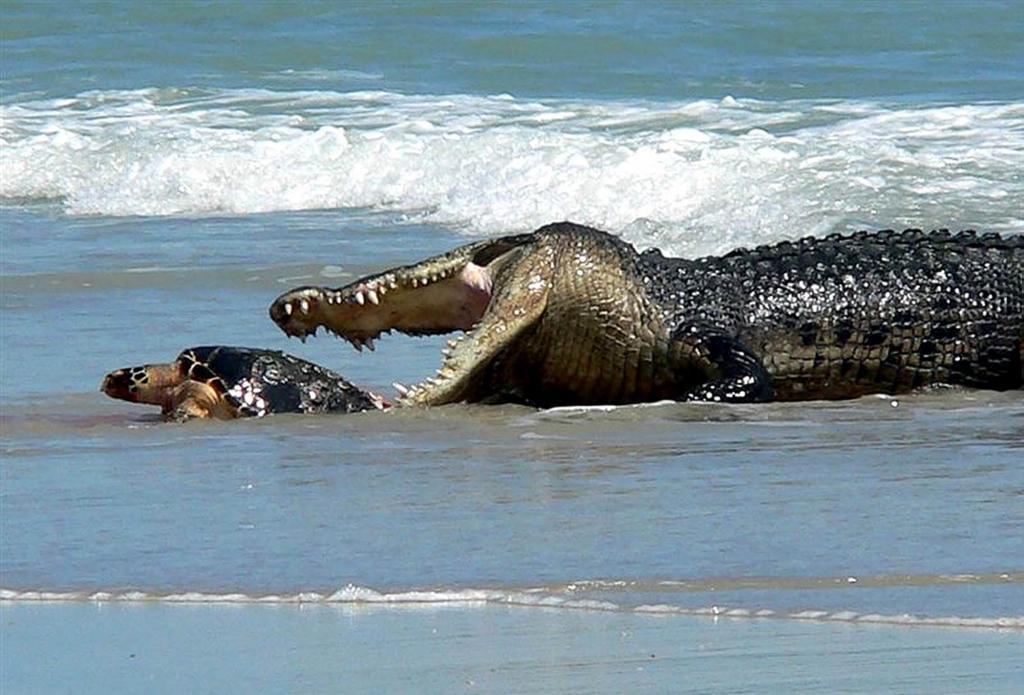Crocodiles are often seen as living fossils. Stubbornly unchanged prehistoric relics that have dominated the swampiest corners of the world for millions of years. Crocodiles are the survivors of a 230 million-year-old lineage called crocodylomorphs, a group that includes the current survivors: crocodiles, alligators, and gharials, but also numerous extinct relatives.
Their ancestors survived two mass extinctions, a feat that required great evolutionary agility to adapt to a rapidly changing world. Research led by the University of Central Oklahoma (UCO) and the University of Utah, just published in the journal Palaeontology, emphasizes that the secret to their longevity lies in their flexibility in both feeding habits and habitat acquisition.
"Many groups closely related to crocodiles were more diverse and abundant. However, they all disappeared, except for these few crocodiles still living today," says Keegan Melstrom, lead author of the study and assistant professor at UCO.
Earth has experienced five mass extinctions throughout its history. Experts argue that we are currently experiencing a sixth one, driven by habitat destruction, invasive species, and climate change. Identifying the traits that drive crocodile survival during planetary upheavals could help scientists and conservationists better protect the most vulnerable species today.
Until now, mammals have been considered paradigmatic examples of survival after mass extinctions, highlighting their generalist diet and ability to thrive in different ecological niches. But research had overlooked the crocodylomorph clade. Melstrom and his team have reconstructed the dietary ecology of crocodylomorphs to identify the characteristics that helped some groups persist and thrive during two mass extinctions: the end of the Triassic, about 201.4 million years ago, and the end of the Cretaceous, about 66 million years ago.
A crocodile specimen displaying its dentition.
Current crocodiles are famous for being semiaquatic generalists that thrive in environments like lakes, rivers, or swamps, ambushing unsuspecting prey. They are not picky eaters. Hatchlings eat a variety of foods, such as tadpoles, insects, or crustaceans, before moving on to larger prey like fish, fawns, or even other crocodiles. However, the uniform lifestyle of current crocodiles hides a huge diversity of feeding ecologies in which past crocodylomorphs thrived.
During the Late Triassic (between 237 and 201.4 million years ago), pseudosuchians, a broader evolutionary group that includes primitive crocodylomorphs and many other extinct lineages, dominated the land. The early crocodylomorphs were small to medium-sized creatures, rare in their ecosystems, and were carnivores that mainly fed on small animals. In contrast, other pseudosuchian groups played a wide range of ecological roles and exhibited astonishing diversity in shapes and body sizes.
Despite their dominance, after the end-Triassic extinction, no non-crocodylomorph pseudosuchians survived. Researchers believe that the survivors did so because of their ability to eat practically anything. "After that, everything goes haywire," Melstrom points out. "Aquatic hypercarnivores, terrestrial generalists, terrestrial hypercarnivores, terrestrial herbivores: crocodylomorphs developed a huge array of ecological roles throughout the dinosaur era."
But something happened during the Late Cretaceous that led to the decline of crocodylomorphs. Lineages specialized in various ecologies began to disappear, even terrestrial generalists. By the end-Cretaceous mass extinction, marked by the meteorite that wiped out non-avian dinosaurs, most survivors were semiaquatic generalists. The 26 current crocodile species are almost all semiaquatic generalists.
Remains of eleven crocodiles in the necropolis of Qubbet el Hawa, Egypt.Patricia Mora
To discover the menus of species millions of years old, researchers analyze the shape of fossilized teeth and skulls. A jaw full of small knives likely cut and pierced meat. A mortar-like grill likely broke down plant tissue. The shape of the skull determines how an animal moves its mouth, providing a clue about its feeding habits. Deciphering the diets of ancient animals also reveals where they would have hunted, what the authors call dietary ecology.
The authors visited zoo and paleontological museum collections in seven countries and four continents to obtain the fossil specimens they needed. They then examined the skulls of 99 extinct crocodylomorph species and 20 living crocodile species, creating a fossil dataset spanning 230 million years of evolutionary history. The specimens represented a range of feeding ecologies, from strict carnivores to obligate herbivores, and a wide variety of skull shapes.
As ambush semiaquatic predators, current crocodiles mostly play similar ecological roles in numerous different environments. They maintain remarkably flexible diets, perhaps a remnant of their deep and diverse evolutionary past. For critically endangered crocodiles, such as the Gharial from the Himalayan foothills or the Cuban crocodile from the Zapata Swamp, dietary flexibility could offer them a chance to survive our current sixth mass extinction, as the biggest challenges these species face are habitat loss and human hunting.
"When people see living crocodiles and alligators, instead of thinking of ferocious beasts or expensive handbags, I hope they appreciate their amazing over 200 million years of evolution and how they have survived so many tumultuous events in Earth's history," notes study co-author Randy Irmis, paleontologist at the Utah Natural History Museum and professor in the Department of Geology and Geophysics at the University of Utah. "Crocodiles are poised to survive many future changes if we are willing to help preserve their habitats."
